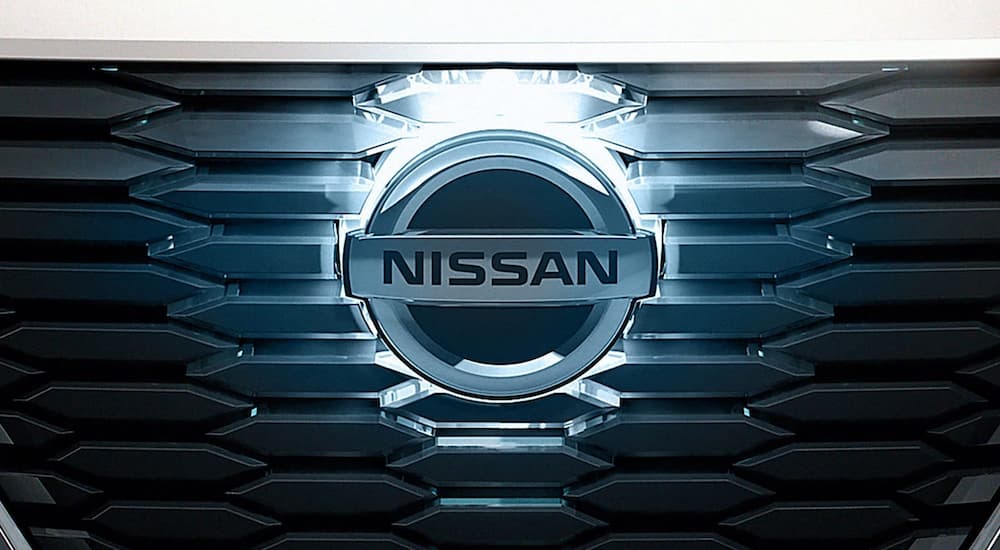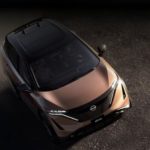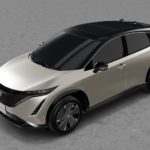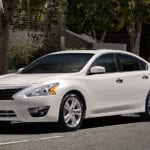Hey! You there! Yes, you, looking at your screen, reading this text. Got a few minutes? Good! Because I’ve got some exciting news from the automotive world to share. I’m going to go on a limb and assume that you haven’t watched the 43-minute video detailing Nissan’s Ambition 2030 roadmap on Youtube. Don’t feel bad; even I fell asleep halfway through, and I was researching this blog post! Thankfully, there’s a press release as well – and lucky for you, I’m here to break it down into language that people who don’t own private jets can understand!
While Nissan rarely strikes as the most interesting brand on the market (except when it comes to affordable RWD sports cars), they have been leaning hard into electrification and autonomous driving for a long time. What they presented in the Ambition 2030 plan is a comprehensive roadmap of the investments and initiatives that they will pursue over the next decade to make their automobiles as accessible and environmentally friendly as possible.
Investing in a Better World
Nissan’s Ambition 2030 is about more than which cars and technologies they plan to roll out – it’s about transforming Nissan into an essential soldier in the battles against climate change and inequality around the world. With such a broad statement comes a broad scope of investments, so buckle up because there’s a lot to unpack here.
The foundation of their investment in a more sustainable world is captured by the EV36Zero initiative, which is first being implemented in Sunderland, UK. Combining an EV production facility with local battery manufacturing and a 100%-renewable microgrid from which to power the facilities, the concept is an enormous step in the direction of a carbon-neutral lifecycle. This first implementation will build 100,000 vehicles per year (likely based on the Chill-Out subcompact crossover concept), invest £450 million in a new gigafactory, and produce 132 MW of wind and solar power – with a 1 MW storage facility using “second-life car batteries” for connecting peak supply to peak demand. As part of the Ambition roadmap, Nissan plans to implement this concept in China, Japan, and the United States by 2030 – a key step for achieving a fully carbon-neutral product lifecycle by 2050.
Imagine that! A vehicle with zero emissions, powered by renewables, built in a carbon-neutral factory, whose battery is destined for a second life in the power grid – a vehicle whose net lifecycle carbon footprint is zero. It’s going to take more than green factories, which is why Nissan plans to hire over 3,000 advanced R&D personnel across the globe in addition to the jobs created by their factory and power grid investments.
Nissan has also recognized that the electric experience, and mobility in general, remains inaccessible to the world’s poor. As a result, Ambition 2030 includes an expansion of their collaborative efforts to bring mobility to the places where it’s needed most! While the details are scant, providing access to sustainable mobility in rural areas and efficient transport in urban zones is a fine concept. Fortunately, Nissan already has well-established programs demonstrating the good that these initiatives can provide:
In 2018, the Blue Switch project (inspired by the use of Nissan LEAF vehicles as power supplies in the aftermath of Japan’s devastating 2011 earthquake) was kicked off to bring EVs into areas – even into buildings – where mobile electricity can be of critical value following natural disasters.
- In the UK and US, they are partnering with advanced research organizations to understand complex urban traffic environments and how cloud AI can improve autonomous vehicle behavior, per CEO Makato Uchida.
- In China, they have partnered with WeRide (an autonomous vehicle start-up) and are seeking the opportunity to pilot a global ride-sharing service in China’s “smart cities” (defined by their advanced digital and infrastructural investments).
- Japan’s Easy Ride provides an app for summoning autonomous Nissan vehicles, with the entire interaction taking place on the phone, and in the rebuilding Fukushima prefecture, Nissan is piloting a sustainable mobility service that supports community activities.
Not only is Nissan’s Ambition 2030 about making vehicles more sustainable than ever; they are also increasing access to mobility for non-drivers and making those options fully sustainable, too!
Battery Development
I think it’s the understatement of the decade to say that better batteries are at the core of any attempt to advance EV technology. Achieving competitive range and acceptable charging times for daily commuters was one thing – now, bringing the manufacturing costs to a place where a battery is cost-competitive with an ICE is the next major milestone. Reaching it obviously falls within Nissan’s Ambition 2030 vision.
The Nissan LEAF was only the second mass-market EV (mere months behind the Mitsubishi i-MiEV) upon its release in December 2010, nearly two years ahead of the Model S – the Toyota Rav4 EV, BMW i3, Kia Soul EV, and Chevy Bolt all followed. Today the LEAF is second only to the revolutionary Model 3 in terms of sales, a level of success enabled by their pioneering advancements in lithium-ion battery technology.
For the short term, Nissan continues to invest in improvements, including the removal of cobalt from their tech. The significance of this is economical and moral: cobalt is the most expensive metal in modern batteries and is primarily sourced from copper and nickel mines in the Democratic Republic of the Congo, where human rights violations, including forced child labor, cast a pall on their exports. Tesla has adopted an older cobalt-free technology which trades energy density for cost and thermal stability; this tech enabled bus batteries in China to reach prices as low as $100 per kWh – low enough to make EVs cost-competitive – and allowed Tesla in China to shave 20% off their Model 3 sticker prices.
For Nissan, the goal is a 65% reduction in battery costs by 2028. Of course, they don’t plan to stop there. They will launch a pilot factory as soon as 2024 in Yokohama to start producing an all-solid-state battery (ASSB). This technology is proven to pack higher energy density (delivering the same range from a lighter battery pack while also reducing charging times) without the fire hazard of liquid electrolyte systems. Nissan is targeting a 100% increase in energy density and a 67% reduction in charge time which will allow more flexible EV platforms and genuine cost-parity with ICE vehicles by costing between $65-75 per kWh as soon as 2028 – 30% cheaper than the milestone reached in China!
Anticipating that the boom in EV demand will only increase thanks to developments like these, Nissan will be investing in battery production around the world, reaching a capacity of 52 GWh by 2026 and 130 GWh by 2030 (as of today, their capacity is around 7.5 GWh). Of course, these batteries will not be in service on passenger vehicles forever – but Nissan is already well-established in the battery recycling industry, with over ten years of experience doing so through 4R Energy Corp.
By reusing, reselling, refabricating, and recycling lithium-ion batteries, the lifecycle of a battery pack is extended significantly. With an emphasis on power storage (refer to the use of second-life batteries in the EV36Zero concept above), these options extend the useful life of the battery by 10-15 years before it needs to be fully recycled, all while contributing to increased renewable grid capacity!
What An Exciting Concept!
It is indeed! The business plan is about so much more than developing cars, with enough exciting initiatives to sink our teeth into that it’s easy to forget there are four new concept cars to talk about, too! Nissan Futures, presented on the Nissan Next website, provides a brief tour of the new design concepts, which share a design language and a theme of applying technology to increase the practicality of being mobile.
The CHILL-OUT
It’s not a far stretch from the brand-new Ariya to reach the appearance of the subcompact crossover CHILL-OUT. The emphasis is an interior space where one can choose to relax or even be productive during commutes. Nissan envisions suicide doors for a massive opening and front seats that slide back far enough to recline and watch movies on the digital dashboard.
The MAX-OUT
The electric convertible replacement for the ICE Z?! Maybe it won’t replace the Z outright, but the MAX-OUT represents Nissan’s foray into maximizing the dynamic potential of EV architecture for performance driving. I would expect Nissan’s Formula E experience to play a significant role in the development of this 2-seat roadster concept.
The HANG-OUT
A minivan that looks like a Honda Element with a wig! If that doesn’t sell you immediately, please ask the nearest trained individual to check your pulse. Similar in concept to the CHILL-OUT, its sliding doors open forwards and backward to fully expose the interior. Seats slide forward and back and pivot around to provide an infinitely flexible family space. Nissan illustrates the car as a makeshift campground or a mobile movie theater as well as a living room or office space. With a design emphasis on eliminating exterior shocks and vibrations, they will attempt to mitigate motion sickness so passengers can take advantage of the utility that the interior space provides.
The SURF-OUT
The electric pickup truck concept from Nissan is presented with an open-backed cab (mid-gate who?) and a single-piece tire assembly (I can’t think of a better way to put it – is there no wheel, or no tire? WHAT HAVE THEY DONE?!), emphasizing a fun-loving go-anywhere nature. They intend for their electric pickup truck to enable whatever activities the passengers can envision, with easy access to off-road locations, standard truck utility, and vehicle-to-everything power outlets.
The ProPILOT to Drive Them All
Nissan has invested ¥1 trillion (approximately $10 billion US) since 2010 in their electric vehicle technologies; to realize these concepts by 2030, they are investing ¥2 trillion more in electrification over the next five years, more than doubling their investment rate. From raising worldwide charging and battery production capacity to the electrification of more than half their lineup to the extension of advanced autonomous driving technologies to virtually every Nissan and INFINITI model by 2030, they are doubling down on the advantage they earned with the success of the LEAF.
The key to this is the extension of advanced tech to the new models. Being the first to introduce technologies like lane keep assist, lane departure warning, blind spot indicators, and forward collision warnings – advanced driver assistance features now available on virtually every new car around the world – has given Nissan a huge head start in autonomous driving. As such, they’ll apply their investments to deliver ProPILOT technology – their autonomous driving tech suite, which made its start as a hands-free single-lane highway cruising feature – to 2.5 million vehicles worldwide by 2026. That’s like including Nissan’s highest tech offering on every vehicle they build worldwide for six months straight!
Following this, next-generation LIDAR – Light Detection And Ranging – systems will be rolled out to nearly every new model for the 2030 model year, enabling virtually the entire lineup to perform autonomous driving tasks. Commonly used for land management and mapping efforts, when applied to vehicles, LIDAR continuously presents a dynamic 3D image to the vehicle’s control center. It identifies the distance and direction to objects in its environment, much like radar/sonar, but without the range and resolution limitations that hamper radio/soundwave-based systems. The resolution to clearly define the shape and structure of the surroundings makes cameras and their plethora of irrelevant information (if there’s an overturned truck in your path, is its color really important?) redundant at best. There may be no better technology for achieving true machine vision.
A Legacy of Firsts, Continued
Nissan’s Ambition 2030 plan is, on its surface, a dense jumble of words and business-speak. Without the details, statements like “transform Nissan to become a sustainable company that is truly needed” or “creating customer pull through an attractive proposition by driving excitement, enabling adoption and creating a cleaner world” are simply too loaded with causes, effects, and adjectives to comprehend. Hopefully, when you read that Nissan’s plan is to “empower society to build a smart ecosystem with integrated mobility,” you’ll now think of EV36Zero, Blue Switch, and Easy Ride. The statement “democratization of EVs” sounds political as heck, when really it refers to batteries that cost $75 per kWh, bringing EV costs into proper competition with ICEs and giving batteries a second life in the power grid to minimize waste. You can think of the concept car lineup and the technology they will bear when Nissan talks about “enhanced experiences through sophisticated technology packaging” – instead of thinking that you might have just suffered a stroke.
Nissan, the same company responsible for selling the same Frontier for more than a decade, whose primary selling point for the Altima and Rogue is the price, should not be written off just because they dared to make a Murano Cabriolet. They “do what others don’t dare to do,” including massive investments in lithium-ion battery technology that led to the LEAF, the first (and highly successful) mass-market EV from a legacy manufacturer. Now with the Ambition 2030 plan laid out, they’ve declared their intention to “change gears […] to realizing a better future for society,” and that is a business plan worth losing a bit of sleep for.




